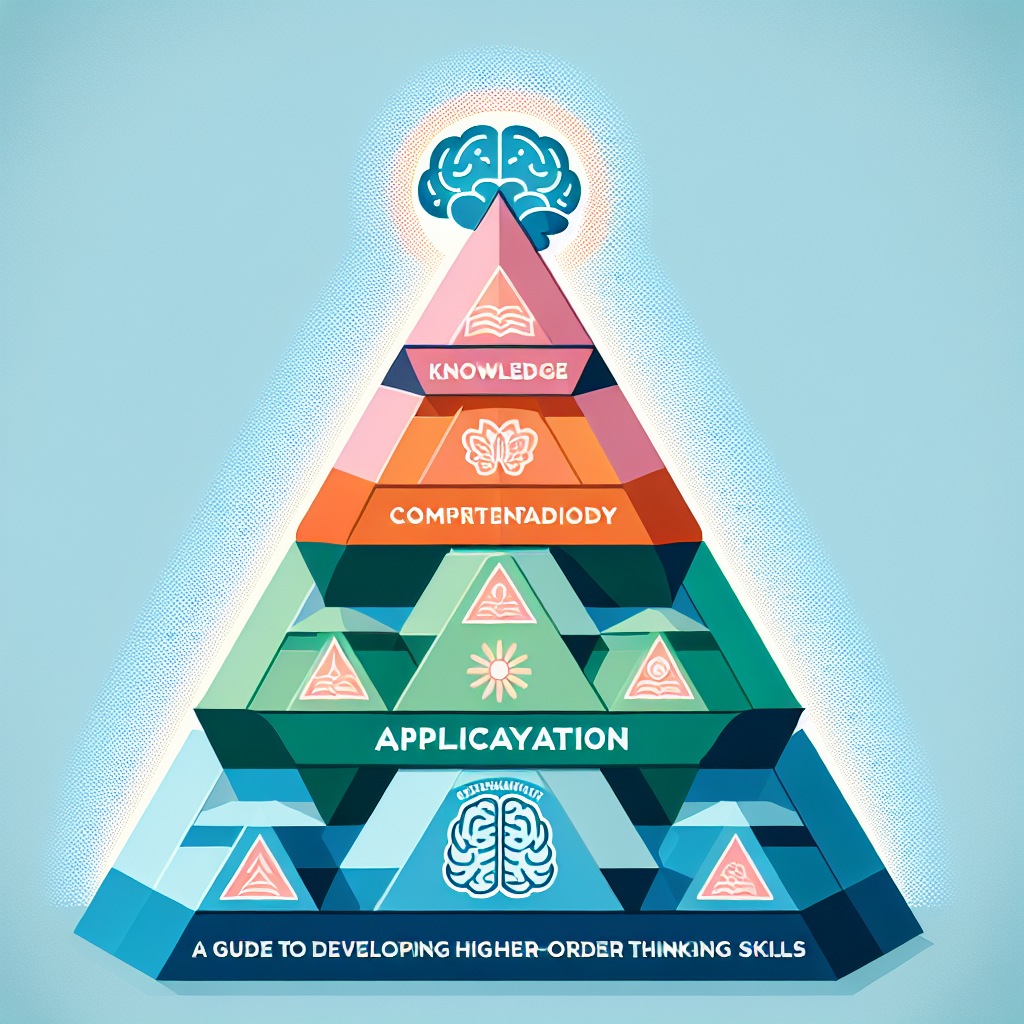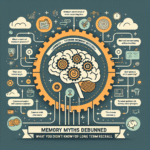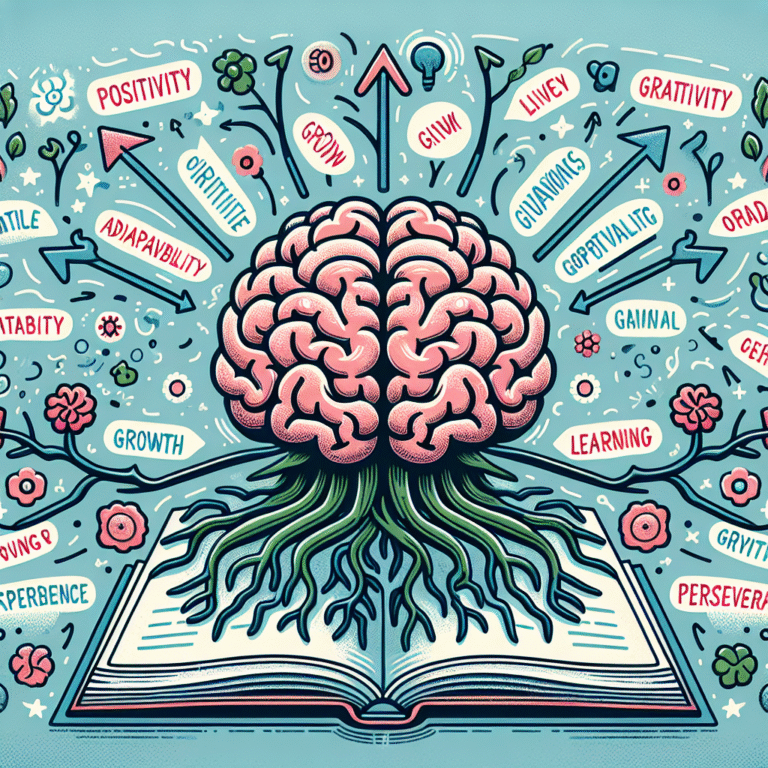
Introduction
In an ever-evolving world filled with information overload, the ability to think critically and creatively has become more essential than ever. How do we cultivate these higher-order thinking skills in our students, professionals, or even ourselves? Enter Bloom’s Taxonomy: A Guide to Developing Higher-Order Thinking Skills. Originally created in 1956 by educational psychologist Benjamin Bloom, this framework has transformed the way we approach learning and teaching. It categorizes cognitive skills and abilities, easily guiding educators and learners alike toward excellence in thinking.
As we delve into the intricacies of Bloom’s Taxonomy, we’ll explore each level in detail, highlight its relevance through real-world applications, and provide actionable insights that will empower you to harness these cognitive skills.
What is Bloom’s Taxonomy?
Bloom’s Taxonomy is an educational framework that categorizes thinking skills into six levels, progressing from lower to higher-order cognitive skills. The original taxonomy included:
- Knowledge (Remembering)
- Comprehension (Understanding)
- Application (Applying)
- Analysis (Analyzing)
- Synthesis (Evaluating)
- Evaluation (Creating)
In 2001, a revision introduced a slightly changed hierarchy, including emphasis on verbs rather than nouns, making it more applicable to teaching strategies. The revised levels are:
- Remember
- Understand
- Apply
- Analyze
- Evaluate
- Create
Understanding these levels not only aids educators in structuring their curricula but also equips learners with a roadmap for their own cognitive development.
The Importance of Higher-Order Thinking Skills
Research has shown that the most successful individuals in various fields possess strong higher-order thinking skills. These skills enable us to solve complex problems, innovate, and adapt. According to a study by the World Economic Forum, critical thinking and problem-solving will be among the top skills required in 2025. Hence, Bloom’s Taxonomy: A Guide to Developing Higher-Order Thinking Skills becomes crucial for everyone, not just educators or students.
Exploring Each Level of Bloom’s Taxonomy
1. Remember (Knowledge)
At the base of the pyramid lies "Remember." This level involves recalling basic facts and concepts. For students, it’s crucial to master foundational knowledge before moving to more complex tasks.
Case Study: In a high school history class, students can memorize key dates and events, which serves as the building block for deeper analysis. Through quizzes and flashcards, educators can reinforce this foundational knowledge.
Table: Techniques for Enhancing Memory
| Technique | Description |
|---|---|
| Flashcards | Quick-review tools for memorization. |
| Mnemonics | Memory aids that use associations. |
| Repetition | Spaced learning for long-term retention. |
2. Understand (Comprehension)
The next level, "Understand," involves grasping the meaning of information. This can include interpreting facts, translating them into different contexts, or summarizing concepts.
Case Study: In a college literature course, students might read a novel and summarize its themes, demonstrating their understanding of the material before moving to analytical tasks.
3. Apply (Application)
"Apply" pushes learners to use their acquired knowledge in real-world scenarios. This level often requires students to take theoretical concepts and apply them practically.
Case Study: In a business course, students might learn about various marketing strategies and then develop a marketing plan for a hypothetical product, linking theory with real-world application.
4. Analyze (Analysis)
This level requires breaking down information into parts to understand its structure and relationships. "Analyze" moves learners into critical thinking territory.
Case Study: In a psychology class, students could analyze different case studies to determine the causes and effects of various behavioral patterns. This wouldn’t be possible without foundational knowledge from previous levels.
5. Evaluate (Evaluation)
"Evaluate" challenges students to make informed judgments based on criteria. This involves critical thinking and deeper engagement with the material.
Case Study: In an environmental science class, students may assess different energy sources based on sustainability, cost, and efficiency, showcasing their ability to make judicious comparisons.
6. Create (Synthesis)
At the top of the taxonomy is "Create," where learners combine elements to form a new whole. This level drives innovation and originality.
Case Study: In an engineering program, students might work in teams to design a prototype that addresses a specific societal need. This application harnesses all previous levels of Bloom’s Taxonomy.
Bridging Bloom’s Taxonomy with Real-World Applications
Understanding Bloom’s Taxonomy is just the beginning. Its true potential shines when integrated into curriculum design and instructional strategies. By aligning lesson objectives with these cognitive levels, educators can cultivate a learning environment that promotes critical thinking.
Actionable Strategies for Educators
Set Clear Objectives: Use Bloom’s taxonomy to establish measurable and specific learning outcomes for each lesson.
Incorporate Varied Assessments: Design assessments that target different cognitive levels, from quizzes that test remembering to projects that encourage creating.
Encourage Collaborative Learning: Group work can enhance analysis and evaluation skills as peers challenge each other’s ideas.
Use Technology Wisely: Incorporate tools like discussion forums or interactive simulations to foster engagement at higher cognitive levels.
- Reflect and Adapt: Continuously evaluate the effectiveness of your strategies, making adjustments as necessary to address diverse learners.
Bloom’s Taxonomy Beyond Education
While Bloom’s Taxonomy is predominantly applied in educational settings, its principles are also applicable in various professional and personal contexts.
In the Corporate Sector
Companies can utilize Bloom’s Taxonomy to enhance employee training. Higher-order thinking skills are vital for managers, who need to evaluate data, analyze market trends, and create effective strategies.
Case Study: A tech company may implement a training program where employees first learn the fundamental technologies (Remember), then participate in team projects to develop solutions (Create).
In Everyday Life
Individuals can use Bloom’s Taxonomy to enhance personal development. For example, when reading non-fiction, one may start by recalling key points (Remember), then summarize chapters (Understand), apply concepts to daily life (Apply), critique the author’s perspective (Evaluate), and, ultimately, integrate these ideas into their philosophy or values (Create).
Conclusion
Bloom’s Taxonomy: A Guide to Developing Higher-Order Thinking Skills provides a structured approach to learning and thinking crucial for success. It’s not just about knowing facts but about synthesizing that knowledge to create something new—whether in an educational setting, the corporate world, or everyday life. As you embrace these cognitive levels, remember that the journey of learning is a continuous one.
Embrace curiosity, challenge yourself to think deeper, and watch how your life transforms through the power of higher-order thinking.
FAQs
1. What are the benefits of using Bloom’s Taxonomy in education?
Using Bloom’s Taxonomy helps educators structure learning processes and assessments, ensuring students develop not just rote memory but critical thinking skills, creativity, and problem-solving abilities.
2. Can Bloom’s Taxonomy be applied outside the classroom?
Absolutely. Bloom’s Taxonomy can be applied in various settings, including workplace training and personal development activities, encouraging individuals to cultivate higher-level thinking skills in any context.
3. How can I assess higher-order thinking skills effectively?
To assess higher-order thinking skills, use a variety of assessment types, like projects, presentations, and portfolios, which allow students to demonstrate their understanding at multiple cognitive levels.
4. Are there online resources available to help implement Bloom’s Taxonomy?
Yes, many online platforms offer courses, templates, and resources tailored to Bloom’s Taxonomy, making it easier for educators to integrate the framework into their teaching.
5. How can parents support their children’s development of higher-order thinking skills?
Parents can engage their children in discussions that require evaluating options, asking open-ended questions, and encouraging problem-solving activities, thereby fostering a critical thinking mindset from an early age.
By embracing Bloom’s Taxonomy: A Guide to Developing Higher-Order Thinking Skills, we can pave the way for a more thoughtful, innovative, and engaged society. Let’s harness the power of these cognitive skills for a brighter future!

















